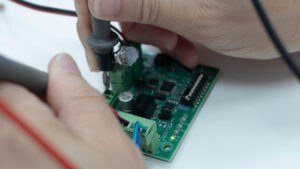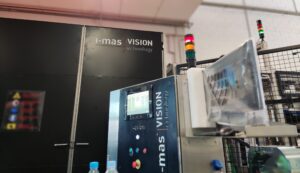Industrial automation has experienced significant progress in recent years, with the integration of new technologies that optimize processes, reduce costs and improve efficiency.
Among these innovations, multifunction grippers and handling systems have become key elements for industries seeking greater versatility and precision in their operations. In this article, we will explore how these solutions are transforming the industrial landscape.
What are multifunction claws?
Multifunction grippers are robotic devices designed to perform various gripping, handling and holding tasks in a wide range of industrial applications. Unlike traditional grippers, which are typically designed for specific tasks, multifunction grippers offer flexibility thanks to their modular and adaptive design. These tools can handle materials of different sizes, shapes and textures, making them ideal for processes that require speed and precision.
Among its most outstanding applications are:
- Loading and unloading of parts in production lines.
- Handling of sensitive components in the electronics industry.
- Clamping and transferring products in the injection molding industry.
Advantages of automated handling systems
Automated handling systems, which integrate multi-function grippers, have revolutionized the way industries operate. These systems allow repetitive and tedious processes to be performed with unmatched accuracy and consistency, surpassing human capabilities in many applications.
In addition, their flexibility to adapt to different work environments gives them a competitive advantage, as they can be configured to handle a wide variety of materials and tasks.
Automation not only improves productivity, but also provides a safer work environment. By reducing the need for human intervention in hazardous or repetitive activities, it minimizes the risk of accidents and promotes a safer environment for workers. Likewise, the quality of the final product benefits significantly, as automated systems ensure greater uniformity and reduce errors that can arise in manual processes.
Technological innovations in gripping and handling
Technological development has driven the evolution of grippers and handling systems, enabling their application in increasingly diverse sectors. Some of the most outstanding innovations include:
- Force and touch sensors: These technologies allow the grippers to detect the right pressure to handle fragile objects without damaging them.
- Machine vision: Integrated into handling systems, machine vision improves the accuracy of object identification and positioning.
- Advanced materials: The use of lightweight and strong materials, such as carbon fiber, improves energy efficiency and claw performance.
- IoT connectivity: Connected grippers and handling systems enable real-time remote monitoring and control, optimizing processes.
The future of automation with multifunction grippers
As industries embrace automation as an essential component, multifunction grippers will continue to play a crucial role in transforming production processes. The combination of artificial intelligence, machine vision and smart sensors promises to take these solutions to a new level, offering companies greater competitiveness and efficiency.
In the engineering department of i-mas we are specialized in the combination of artificial vision technologies, deep learning and industrial automation in production processes, which allows us to offer integral solutions adapted to the specific needs of each client.
Want to learn more about our services? Contact us or visit our projects section!



